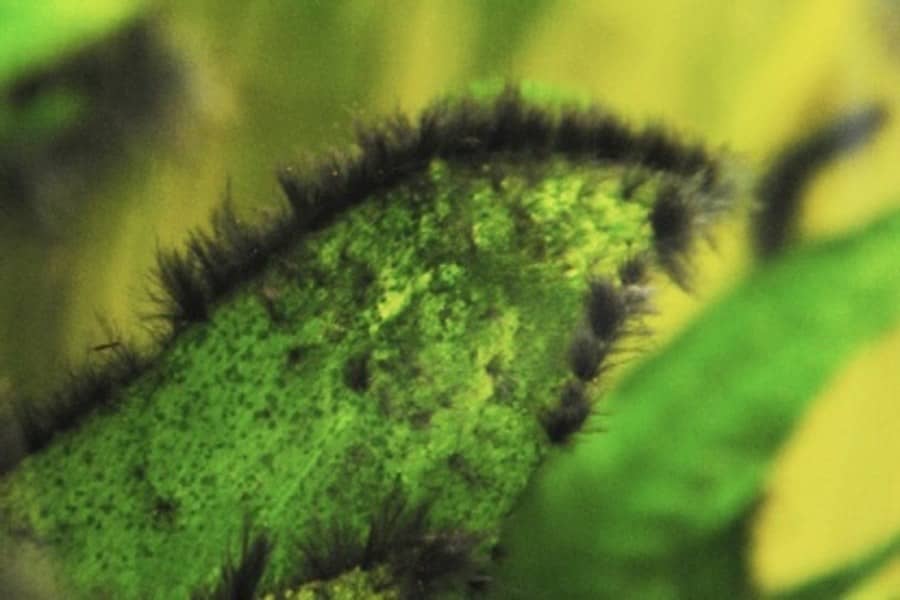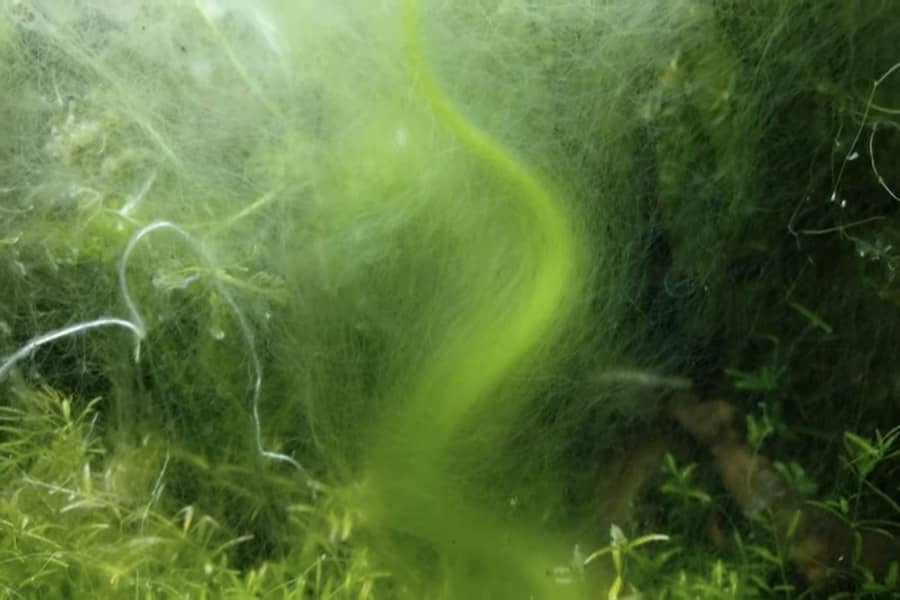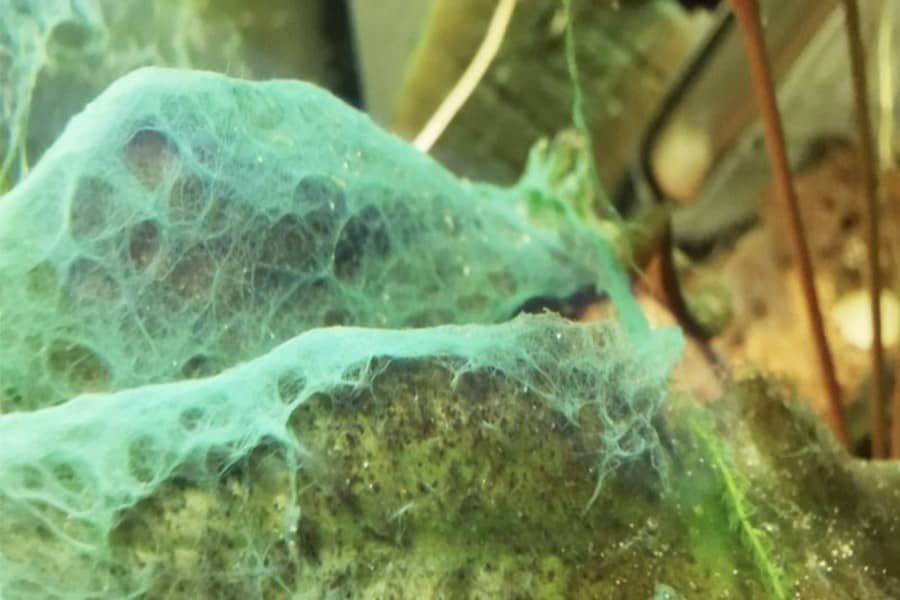How To Control Algae Growth In Aquarium?
This post may contain affiliate links.
When you have an aquarium, facing algae becomes an inescapable part of the hobby. Algae isn’t necessarily harmful. It’s rather a natural phenomenon that indicates a balanced and healthy aquarium. At times, algae became a nuisance when it started to bloom uncontrollably.
If you want to know the root causes of algae and the most common types found in freshwater, this article is for you. Here, we have shared common practices to efficiently reduce the algae in fish tanks and prevent rapid growth.
How to Control Algae Growth In Aquarium?

Algae blooms are caused by an imbalance in nutrients and lighting, so the goal is to get the aquarium as close as being balanced. There are a number of ways to achieve the desired balance.
Following are the prominent methods that will help you control algae growth naturally and efficiently.
Reduce lighting in your aquarium
When trying to get rid of algae in aquariums, the first thing to do is reduce the amount of light it receives throughout the day. If you have a planted tank, keep the lights on not more than eight to ten hours a day. You can completely shut off lights for a fish-only tank and use it for a few hours only when you want to watch or feed your fish.
Do not place your tank where it can come into contact with direct sunlight. Use a timer to turn the light on and off, as it allows you to have a schedule to stick to.
Don’t overfeed Your Fish
Do not feed your fish more food than they can eat in one minute. When you overfeed your fish, you will have an excess of uneaten parts and fish poop. Both serve as a nutrient-rich substance for the algae to grow rapidly.
Do not feed adult fish more than two times a day and baby fish (fry) 5-6 times a day. Within 30 minutes of feeding, remove all the leftover parts.
Test aquarium water regularly
Testing water parameters regularly gives you an upper hand over keeping algae nuisance at bay. Algae will grow uncontrollably whenever there are high levels of phosphate, nitrate, or iron present in the aquarium water. Use API Water Testing Kit to keep a check on the water quality.
Perform water changes regularly
Performing routinely partial water changes is one of the best ways to prevent algae growth. It helps remove the excess organics and keep the nutrients low.
Ideally, you should do a 10 to 15 percent water change every week. If you have a moderately populated aquarium, you may have to perform up to 30 percent water change once a week.
NOTE: Always test your tap water quality before doing water changes. If the results show the availability of algae-encouraging elements such as a high amount of phosphate, you must treat it at the source. Seachem PhosGuard works quite efficiently for battling phosphate in the water.
Have live plants in your fish tank
One of the best ways to win over algae is to let your plants lead the battle. Live plants will usually absorb most of the nutrients available in the water, leaving less to none for the algae to thrive.
Moreover, plants compete with algae by growing across the surface and shadowing the algae underneath where it won’t receive much light. Many aquarists believe plants release natural algaecides that stop algae from covering leaves.
Introduce algae eaters to your aquarium
You don’t have to deal with algae on your own; let algae eaters take care of it. You can find a variety of tropical freshwater fish and invertebrates that feed on algae.

For smaller tanks, you can bring home Otocinclus Catfish and algae-eating shrimp. For aquariums significantly larger, you can introduce Mollies, Siamese algae eaters, and Bristlenose Catfish to the algae.
With these natural algae eaters, you may run off algae soon and have to buy some commercially available algae-based foods to feed them.
Clean your aquarium regularly
You can apply all the advanced measures, but if you aren’t maintaining proper cleaning in your tank, getting rid of the algae will be a continuous hassle. Manual cleaning may not prevent algae from returning. However, it will assist other management methods to be more effective.
To manually remove algae, you can use a magnetic scraper like Aqueon. It helps you clean the aquarium’s walls from the outside and keep your hands dry. Brush plant leaves and scrubs decor items when you see algae start to coat them.
Suck out the excess algae from the water via siphoning and vacuuming the gravel. Cleaning your filter and bio-media is a crucial part of maintaining effective filtration.
Do not leave loose algae floating in the water, as it will eventually decompose and release the foul smell such as of rotting eggs. Moreover, it lowers the pH and reduces the oxygen level in the water.
Is Algae Bad For Your Fish Tank?
When newbies hear the term ‘algae,’ they think of it as something gross-looking floating on the water. Many believe it’s an unwanted thing, but that’s not true. Algae is an essential lifeform for the aquatic ecosystem that serves multiple purposes.
Having a certain type of algae in your tank makes the aquascape looks natural. Moreover, it gives the inhabitants wild-like vibes making them suspect less of the captivity. Besides, algae is a good food source for fish and microorganisms. It even produces oxygen via photosynthesis.
This proves our point that algae is naturally beneficial for your aquarium. However, the presence of too much algae is what causes the real problem for the inhabitants and tank owners. Algae blooms are a telltale sign that shows you have an imbalance in your aquarium.
It increases the pH levels making the water highly alkaline and toxic. Fish casualty from excessive algae growth is primarily a result of oxygen depletion. Some algae can also release harmful compounds into the water. Furthermore, an abundance of algae quickly covers the plants and ornaments, diminishing the aesthetical appeal of the environment.
The bottom line is you want to have algae in your fish tank, but not too much.
Causes of Excessive Algae in Aquariums
The root of excessive algae lies in the imbalance of lighting and nutrients. If you are experiencing sudden algae growth in your aquarium, you are either providing too much light to your tank, or there are too many nutrients in it.
Following are the standard practices that cause an imbalance in a fish tank offering algae an ideal breeding ground to multiply its growth. You could be involved in one or more of the following practices.
- You leave the lights on for too long. Or your aquarium might be placed in a location where it often receives direct sunlight.
- You overfeed your fish which results in a lot of fish poop and uneaten parts floating all around the tank.
- You don’t perform the regular water changes.
It’s easy to fix the problem once you identify what you were doing wrong.
Types of Algae in Fish Tanks
Identifying the type of algae growing in your aquarium will further help you determine the cause and an effective cure to the problem.
Brown Algae

Brown algae is made up of single-celled organisms commonly referred to as diatoms. It looks dusty and has a slimy texture forming soft brown clumpy patches. You will not find it floating all over the surface, rather being attached to the surfaces – glass, rock, plants, and other ornaments.
Cause:
- Brown algae is mostly found in newly planted tanks and is caused by significant levels of phosphates and silicates.
Cure:
- For the best part, brown algae is not harmful and is easiest to get rid of. You can leave it as it is; it will disappear as the tank matures.
- Or you can remove it using an algae scrubber sponge.
Black Beard Algae

It belongs to the family of red algae and can be found in black, gray, dark green, and all shades in between. Black beard algae is the most stubborn algae to eliminate.
It may not be harmful to the inhabitants; however, if left untreated, it can quickly grow into thick and bushy clumps taking over the whole aquarium. Black beard algae mainly grow on driftwood, decor items, and plants.
Cause:
- It can be caused by excessive photoperiod time, low levels of co2, and high pollutant levels.
Cure:
- You can introduce Siamese algae eaters, Florida flagfish, or Amano shrimp to your tank to get rid of black beard algae.
- Or, you can choose to treat it chemically using liquid carbon or spray the infested items (outside the tank) with 3% hydrogen peroxide.
Hair Algae

As the very name implies, it literally looks like wet hair. Hair algae have longer, soft filaments that form carpet-like layers coating plants and decoration in an aquarium. The main concern with hair algae is that it grows faster and can give you a harder time getting removed.
Cause:
- Hair algae is usually triggered by an excess of iron, too much light, or not enough nutrients to balance out the amount of lighting.
Cure:
- Manually remove the larger clumps of algae using a toothbrush.
- Reduce the lighting period in your aquarium, introduce fertilizers, and lower iron levels.
- Add algae eaters to your tanks, such as Siamese algae eaters, Amano shrimp, or Florida flagfish.
Green Algae

Green algae is one of the most common algae found in freshwater tanks. As the very name sounds, it is green in color. Although green algae is considered good, its abundance can cause problems for fish and plants. It can be identified as green spots on the aquarium wall and ornaments.
Cause:
- The growth of green algae is mainly caused by too much light or an imbalance of phosphate levels in the water.
Cure:
- Since it can be difficult to remove, use a glass or acrylic safe algae scraper with a blade incorporated.
- You can put algae-eating fish or Nerite snails in your aquarium to feed on the green, spot algae.
Blue-Green Algae

When you encounter blue-green algae in your aquarium, be assured that it’s not your regular algae but a case of cyanobacteria. It proliferates and starts covering the substrate, plants, and decor with a slimy blanket. Therefore, identifying blue-green algae in its initial stage is crucial to control the spread.
Cause:
- There is less information available about what causes an outbreak of blue-green algae. High amounts of nitrate and phosphate levels in water are believed to be a possible cause.
Cure:
- You can try to remove it manually. Alongside, performing regular water changes and increased water agitation will help prevent blue-green algae.
- Test your aquarium water for phosphate. If the results show its significance, use commercial treatments to lower the amount.
- Additionally, you can use an Erythromycin antibiotic. However, apply caution when dosing your tank, as it may cause harm to the nitrifying bacteria colonies in the biofilter.
Green Water

If your aquarium water has turned green, it is due to the rapid growth of microscopic algae or single-celled phytoplankton. The problem with green water algae is that it cannot be wiped off or even removed by doing water changes.
Cause:
- Green water in fish tanks is often a result of too much lighting, excess nutrients, or an ammonia spike.
Cure:
- The most effective way to get rid of green water is to blackout your aquarium by blocking all lights for at least a week. In this process, your plants may suffer, so keep that in mind.
- Treating green water using a UV sterilizer is another alternative that works efficiently.
Final Words
To get rid of algae or control the spread, it’s essential to treat the root problem causing the outbreak. If you tackle algae problems on the surface level, such as scraping it off the water, it will come back again.
However, it is not a complicated task. By applying the combination of the techniques above, you will be able to control algae growth with much ease.
